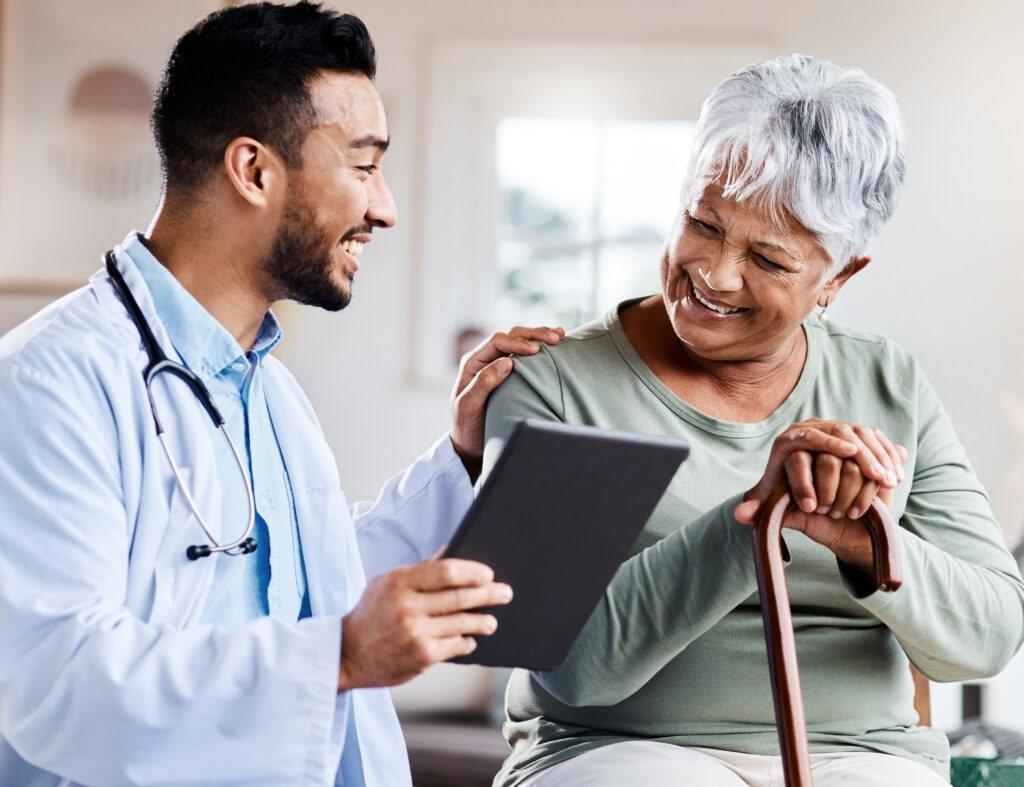The painter Georgia O’Keefe practiced her craft for many years, despite having age-related macular degeneration (AMD). Later in life she took up sculpting to continue her profession in a creative new way. It is stories like this that bring hope to anyone grappling with vision loss.
Being diagnosed with macular degeneration is a shock to most patients, some of whom have no symptoms at the time. The prospect of losing some, or all of your sight can be devastating, and often leads to depression, as patients worry over the potential loss of independence and changes to their lives.
The American Macular Degeneration Foundation (AMDF) works to empower those living with AMD through education, advocacy, and research funding. The organization helps people to better understand what AMD is, as well what is in their control when it comes to the condition.
Supporting providers through education
The AMDF has been a longtime partner of PlatformQ Health in developing free educational programming, which is crucial for both patients and providers when it comes to conditions like AMD. The organization seeks to educate people that they can still have a very rich life, despite the diagnosis.
“The moment of diagnosis can be overwhelming to an AMD patient, and providers may not have the time to explore and understand a newly diagnosed patient’s state of mind,” says AMDF founder Chip Goehring. “Even if a provider explains that having AMD doesn’t necessarily mean that the patient will lose all of their vision, that there are many steps people can actively take to both slow the progression of vision loss and learn how to maximize their remaining vision — or that vision changes could be imminent and a sustained treatment plan needs to start immediately — the patient may not be capable of absorbing that information in the moment.”
AMDF receives many calls from those who are newly diagnosed with AMD and are struggling. The organization found that early on, education is crucial for both patients and their health care providers. “Even with all the information online, the time of diagnosis is a life-changing moment for a patient. Lack of acknowledgement of this can be very isolating. We encourage providers to take a few minutes to sit with patients to help them begin to process what they heard. If they don’t have time to do more, they can provide our brochures to patients and point them to our videos and webinars as resources for support.”
It’s important for patients to have time to grieve what they may lose, so that they can process, adjust, and adapt in the future. Professionals emphasize the importance of this stage. Grief has a place and a purpose. It’s helpful for patients to be able to have room to be sad about their diagnosis and work with a therapist to process that grief.
“What we’ve heard from the professionals we work with is that those who don’t go through the process of grieving are typically less likely to adopt new technologies that can help them, because they’re not ready to move forward,” says Goehring.
A path forward for patients and their families
For patients and caregivers, education is even more essential. “Between the lack of time that doctors have and the ocean of information online – including a lot of misinformation on the internet – this can leave patients feeling overwhelmed and unsure about who to trust,” says Goehring. The AMDF’s goal is to provide a credible source of information, where patients and their families can go to ask questions – and feel less alone. “When people have a manageable educational program where they can digest information, that’s really powerful and really important,” says Goehring.
To that end, there are many practical steps patients can take to improve their quality of life, including:
- Making lifestyle changes like making dietary changes, exercising, quitting smoking, and taking vitamin supplements to slow disease progression and extend the time they have functional vision
- Working with a low-vision occupational therapist to maximize the vision they have
- Learning about assistive technologies such as modified input devices and typoscopes
- Gaining support through local veteran’s organizations, Lions Clubs, and Associations for the Blind
Elevating patient voice
One important element of the educational programs is known as patient voice. That involves sharing firsthand experiences from other patients with AMD. Having a patient on the panel of an educational program is extremely beneficial. “Patients really want to educate themselves about the disease,” says Goehring. “Hearing from other patients breaks the sense of isolation, and helps light the way for patients in need of support.”
Hundreds of patients at a time participate in these online education programs, which are offered live and on demand.

